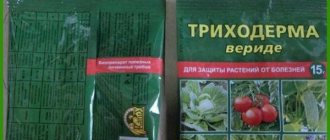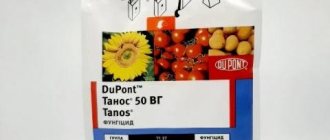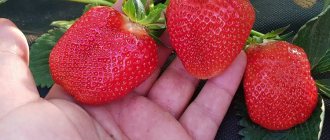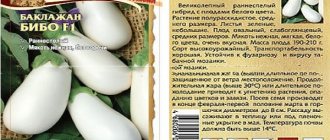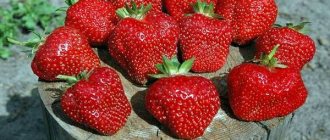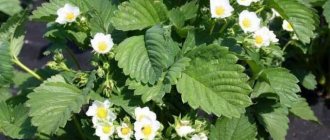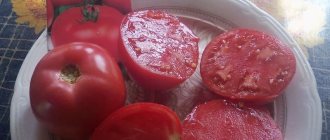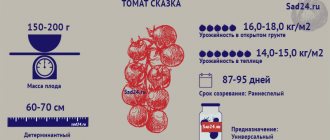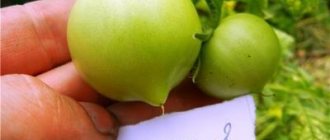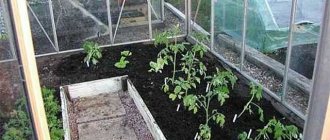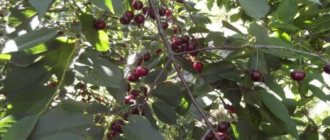Content
- Purpose and application
- Composition and dosage form
- Mechanism of action "Tanrek"
- Processing regulations
- a) Regulations for treatments with the drug “Tanrek” on private farms
- b) Regulations for treatment with the drug “Tanrek” in agricultural production
- Restrictions and security
- Phytoxicity
- Compatibility "Tanrek, VRK"
- Analogues of the drug "Tanrek, VRK"
- Advantages and disadvantages
"Tanrek" is a systemic insecticide with acute contact-intestinal action. The material includes purpose, composition, mechanism of action, regulations for use, compatibility, analogues, restrictions and safety.
Toxicity level and human exposure
Tanrek is characterized by moderate danger (class 3) for people and animals. If the application rates are observed, it does not suppress the growth and development of crops. The active component does not accumulate in fruits.
Imidacloprid poses a moderate hazard to freshwater animals, so its use near bodies of water is permitted. However, due to the fact that the drug can have a toxic effect on bees, it is impossible to treat plants during flowering.
Expert opinion
Stanislav Pavlovich
Gardener with 17 years of experience and our expert
Ask a Question
Attention: The active substance contained in the Tanrek insecticide can negatively affect the fragile nervous system of children, leading to a decrease in memory and learning ability.
Purpose and application
The drug is widely used in private farms to protect potatoes, cucumbers, tomatoes, flower and ornamental crops to combat a large number of different pests. Among them are aphids, whiteflies, Colorado potato beetles, apple flower beetles, thrips and many others. etc.
In agriculture it is used on wheat and other cereals for protection against harmful bugs and ground beetles, as well as for treating pastures and areas inhabited by locusts.
Advantages and disadvantages
Tanrek is part of the group of insecticides with intestinal and contact action. Judging by the reviews, it has proven to be an effective drug, especially in cases of large insect infestations on agricultural land.
Advantages:
- fast action (after 3-4 hours the plants become poisonous to pests), after 24-26 hours – death of insects;
- 100% destruction of insects;
- the drug actively “works” against individuals that are located on the underside of the leaf;
- effective regardless of weather conditions and temperature indicators;
- Tanrek has no resistance, which allows its use, subject to the rules, for a number of years in one area;
- there is no phototoxicity (subject to compliance with dosages and volumes of consumption);
- can be used for treating soil, as well as for soaking seed material;
- Sharing with Fitosporin is acceptable.
The product can be used for treatments using aviation (relevant for planting on an industrial scale). The insecticide provides protection for up to two to three weeks, while the consumption rates are insignificant.
Composition and dosage form
The basis of the drug is the active ingredient IMIDACLOPRID, 200 g/l. , chemical class neonicotinoids.
Preparative form - VRK (water-soluble concentrate), packaging for agricultural production - 1 liter jar, for private household plots - 1.5 ml ampoules and bottles of 10 ml and 50 ml.
For convenient use on private farms, there are two series of the drug, absolutely similar in composition:
- “Tanrek - from aphids, whiteflies”;
- "Tanrek - from the Colorado potato beetle."
Line of manufactured drugs "Tanrek, VRK", assessment of the authenticity of the drug
Features of the product's action
Tanrek against aphids
The drug Tanrek against aphids and whiteflies has some features of use:
- Imidacloprid is a systemic substance;
- destroys harmful insects and beetles (weevils, ground beetles), but is not effective against arthropods (ticks);
- long protective period – up to 30 days;
- toxic substances enter only the green parts of the plants, and not the fruits, so it can also be used for drip irrigation;
- Half-life in soil is 50-100 days, i.e. has high stability;
- non-phytotoxic for garden and garden crops;
- the insecticide can be diluted in liquid at 5-7 pH;
- is well compatible with fungicides: Skor, Thanos, Topaz, Horus, anti-mite drugs Omite, Arrivo, Bi-58, as well as Fitosporin.
On a note!
Some domestic flowers may have leaves that turn yellow after spraying with Tanrek; this applies to plants with more sensitive or thin leaves, conifers, orchids, etc. Therefore, it is recommended to first spray one branch or 2-3 leaves with the drug and observe. With severe phytotoxicity, the leaves will turn yellow within 2 days, but it is necessary to exclude other causes of this phenomenon: overdrying, sunburn or a large amount of fertilizer.
Mechanism of action "Tanrek"
"Tanrek", having an acute contact-intestinal effect and pronounced systemic activity. Imidacloprid enters all parts of the plant (leaves, stem and roots) through sap flow and affects the nervous system of harmful insects, blocking nerve connections and suppressing signal transmission through the central nervous system of pests. Insects die from overexcitation, then stop feeding and die within 24 hours.
It is important to note several distinctive features of the drug:
- the drug acts on both adult insects and larvae of different ages;
- unlike pyrethroids, Tanrek reduces its effectiveness at high air temperatures, and is also quite resistant to washing off by rain and exposure to sunlight;
- The mechanism of action of the drug "Tanrek" is different from pyrethroids, organophosphorus compounds, and carbamates, which allows it to be used effectively when alternating insecticides of different chemical classes.
The period of protective action is at least 14 - 21 days after treatment (depending on the pest and crop).
The speed of initial impact is within a few hours after treatment.
Tanrek: consumption rates
The consumption rates of the prepared Tanrek solution are 10 liters per 100 m2 of leaf mass on herbaceous plants (cucumbers, tomatoes, potatoes) and from 2 to 5 liters per tree (depending on age and height), approximately 1-1.5 liters per currant bush and gooseberries.
Dosages: on apple, pear, currant, gooseberry, plum and other crops, the consumption rate is 3 ml Tanrek per 10 liters of water. Dosage for vegetables (cucumbers, tomatoes) - 5 ml per 10 liters of water, spraying potatoes against the Colorado potato beetle: 1 ml per 10 liters of water.
The working solution cannot be stored; after dilution, use immediately (can stand for a maximum of 3 hours).
- How to dilute Tanrek for spraying the Colorado potato beetle: pour 1 liter of water into a plastic bucket, measure 1 ml of the drug, mix, bring to a volume of 10 liters. Pour into a sprayer.
- How to breed Tanrek against aphids and whiteflies on fruit trees and shrubs: pour 1 liter of water into a plastic bucket, measure out 1.5 ml of the drug, mix, add water to a volume of 5 liters. Pour into a sprayer. When the solution runs out, dilute the next batch with 5 liters of water.
- How to dilute Tanrek against aphids and whiteflies on vegetables: pour 1 liter of water into a plastic bucket, measure out 5 ml of the drug, mix, add water to a volume of 10 liters. Pour into a sprayer.
How to dilute Tanrek for indoor flowers: measure the required amount of the drug with a syringe, pour it into a plastic bottle with water. Dosages: for plants 1 ml per 2 liters of water or 5 ml per 10 liters of water. In some plants, yellowing of the leaves may occur after spraying, especially plants with thin, delicate leaves, conifers, and orchids. It has been noted that plants of the Arliaceae family (Schefflera, Fatsia) and the Gesneriaceae family (Aeschynanthus, Streptocarpus) are sensitive to tanrek (and analogues). It is worth diluting the drug 0.5 ml per 500 ml of water and spraying one twig or a pair of leaves. If phytotoxicity is present, yellowing will occur within a day, to a maximum of two days. However, other factors that cause yellowing of the leaves (overdrying, overwatering, sunburn, overfeeding with fertilizers) should be excluded.
Scale insects and mealybugs are direct relatives - they belong to different families of hemipteran insects. However, their resistance to imidacloprid and other neonicotinoids (Aktare) varies. Scale insects are more sensitive; usually two sprays are enough, with an interval of 3-5 days, to get rid of the pests. But scale insects are more resistant to this group of drugs. In order not to be poisoned yourself and not to depress the plants once again, for treatment against scale insects and scale insects it is worth using another scheme: watering with Tanrek at the root (1 ml per 1 liter of water) + spraying with insecticides of the pyrethroid class (Decis) or FOS (Alatar, Fufanon).
Waiting time - the time after processing until harvest is 30 days.
Toxicity
Tanrek is dangerous for fish, bees (hazard class 1), beneficial insects, moderately toxic for warm-blooded animals and humans when administered orally (if swallowed), the main impact is on the liver, in addition, disturbances in the rhythm of breathing and coordination of movement, tremors, diarrhea, and convulsions may be observed. Urgently induce vomiting, rinse the stomach, and seek medical help.
Sometimes when spraying at home, headache and nausea are observed - in cases where the room is not ventilated.
Half-life in soil is up to 190 days.
Security measures.
Spraying in a respirator, diluting the solution strictly while wearing gloves. After work, wash your hands with soap. Store the drug in a cool, dry place at a temperature of about 5-15C, separate from food and medicine, out of the reach of children and pets!
Processing regulations
Treatments are carried out by spraying. The concentrate is dissolved in 1/3 of the required volume of water, mixed thoroughly, and water is added to the full volume. The working solution cannot be stored and must be used on the day of preparation. During operation, stir periodically.
a) Regulations for treatments with the drug “Tanrek” on private farms
Regulations for the use of "Tanrek, VRK" for private household plots
b) Regulations for treatment with the drug “Tanrek” in agricultural production
Regulations for the use of "Tanrek, VRK" for agricultural production
Reviews from gardeners about Tanrek
- Alevtina . It coped relatively well with pests – not only gnawing ones, but also sucking ones. I just read that the latest research has found that neonicotinoids (to which this drug belongs) turn out to be the cause of the widespread death of bees and the pestilence of wild pollinators in Europe and some other Latin American countries. That’s why these drugs are now banned there, but here they sell them as before. If you care about nature, think about it.
- Anna . I sprayed my roses with Tanrek - they bloom beautifully, it helps! I saved cucumbers from aphids with this remedy; I diluted a 10-liter ampoule. A neighbor sprayed his neglected shrubs and trees on the property (there were aphids and cobwebs), although together with another drug, Raek - after 2 weeks there was not a single parasite left! But the fruits and berries remained clean.
- Ioannina . It helped me get rid of aphids on house plants and flowers - they disappeared. But I diluted the solution not according to the instructions, but a stronger one - an ampoule for half a liter of water. Mom treated currants with Tanrek at the dacha - they also disappeared after the first application and never returned.
Partner news:
Useful articles:
Restrictions and security
a) For humans and warm-blooded animals - hazard class 3 (moderately dangerous compound). When working with the drug, follow generally known personal safety standards and use PPE. The work is carried out in accordance with the current regulations GOST 12.3.041-86 and SanPiN 1.2.2584-10.
DATES FOR LEAVING people to carry out manual and mechanized work:
- open ground - 3 days;
- protected ground – 1 day.
WAITING TIMES before harvest:
- for open ground (wheat, pumpkin, potatoes) – up to 20 days;
- for protected soil (tomato, cucumber, leafy greens, salads) - at least 3 days;
- on flower and ornamental crops – the period is not regulated.
b) “Tanrek” belongs to the 2nd class in terms of resistance in soil. The drug is toxic to earthworms.
c) For bees – 1st hazard class (highly dangerous). Treatments are carried out in accordance with the “Instructions for the prevention of bee poisoning by pesticides” (Moscow, 1989). It is necessary to notify local apiary owners about treatment zones, treatment times, the product used, etc. Treatment during the flowering period and during the active flight of pollinators is completely prohibited. Plants are sprayed only in the early morning or late evening, at wind speeds of up to 2 - 3 m/s. The border protection strip for bees is at least 4 - 5 km, the flight of bees is limited to at least 96 - 120 hours.
d) Fishery assessment - 2nd hazard class. The use of the drug in the sanitary zone of fishery reservoirs is permitted, subject to compliance with the regulations. It is prohibited to discharge the drug into any water bodies, including sewers and septic tanks.
| DOWNLOAD/VIEW (.doc file) “Safety data sheet for the use, storage and transportation of the pesticide “Tanrek, VRK” |
Precautionary measures
Precautionary measures when processing Tanrek
According to the instructions, Tanrek belongs to the 3rd class of toxicity for humans, therefore, when using it, it is necessary to wear protective clothing, rubber gloves on your hands, a respirator and goggles.
While working with the insecticidal preparation, it is strictly forbidden to drink, eat or smoke. After spraying, you need to wash your face and hands with soap, rinse your mouth, and it is recommended to take a shower.
Taking into account the positive reviews about Tanrek from those gardeners and gardeners who have successfully used this drug to save currant bushes, trees, vegetables from aphids, whiteflies and other pests, the use of this effective remedy against pests on indoor and garden crops should be recommended.
Analogues of the drug "Tanrek, VRK"
Analogues of “Tanrek, VRK” are drugs based on imidacloprid: “Akiba”, “Borey”, “Biotlin”, “Zhukoed”, “Zubr”, “Iskra Zolotaya”, “Imidabel”, “Imidor”, “Colorado”, “Kortlis”, “Korado”, “Commander / Commander Maxi / “Commander Plus”, “Contador”, “Confidelin”, “Kalash”, “Klubneshield”, “Confidor / Confidor-Extra”, “Prestige”, “Prestigator” , “Patron”, “Taboo”, “Espero”, etc.
| Read more: INSECTICIDES - summary table of drugs used (by composition/active substance) |
Where to buy and price of insecticide
The insecticide "Tanrek VRK" is sold in all specialized stores for gardeners, in large supermarkets (for example, Auchan, Family Magnit, Lenta, Leroy, etc.). The drug can also be purchased in online stores.
Price for the drug:
- From 20 rubles per 1.5 ml ampoule.
- From 170 rubles per bottle of 10 ml.
- From 280 rubles per 50 ml bottle.
- From 3363 rubles per 1 liter bottle.
Instructions for use
Before using the product, be sure to read the instructions for use and strictly follow the recommendations.
The basic rules of application include:
- All work must be carried out in calm, clear weather.
- The result will not be affected by the time of day when spraying is carried out, but for safety, work should be carried out either early in the morning or in the evening.
- It is necessary to take into account the characteristics of the crop, the area being treated and the type of pest.
- The drug is absolutely neutral in relation to materials, so you can use any model of sprayer, plastic, metal, etc.
- The preparation of the solution, as well as the consumption, must be carried out strictly according to the instructions.
- Recommended for use in cases where the entire harvest is at risk and other methods do not yield results.
- Regardless of the type of crop, one-time use is allowed.
- Combination with other drugs is possible.
It is permissible to combine it in tank mixtures with some fungicides and anti-tick medications.
These include:
- Topaz. Used against the mycelium of fungal pathogens.
- Horus. This is a fungicidal agent that has a wide spectrum of action.
- Bi—58. Effective against gnawing and sucking insects.
- Omite. Refers to acaricidal drugs.
Speed of exposure and period of protective action of the drug
The drug "Tanrek" begins to act three to four hours after use. Its advantage over many insecticidal agents is that the duration of its action is not affected by precipitation, watering, or temperature changes. The use of this particular drug allows you to reduce plant processing. Its protective effect lasts up to four weeks. The drug is safe for plants; moreover, its substances do not accumulate either in root vegetables or in the fruits of crops.
Hazard class, precautions, expiration date
The drug Tanrek has a hazard class for humans and warm-blooded animals - 3 (low toxicity). For inhabitants of reservoirs and bees, the insecticide hazard class is 1.
Therefore, Tanrek is prohibited from spraying near rivers, lakes or ponds. Also, plants should not be treated with this product during the flowering period, so as not to kill the bees.
In soil, the half-life of the product is approximately 6 months.
When carrying out treatments, you should wear protective clothing that covers the entire body, cover your nasopharynx with a respirator, and cover your hands with latex gloves. Closed shoes are worn on the feet.
If the product gets inside, various health problems may occur, at the first signs of which you should consult a doctor.
The shelf life of the drug Tanrek is 3 years from the date of manufacture.
Combination with other insecticides
With prolonged use of Tanrek, it causes insects to become addicted to the active substance. It is recommended to combine it with other insecticides. They are mixed together in one container or used separately. In this case, the effectiveness of the drug is much higher.
Tanrek is also combined with fungicidal compositions. This provides additional plant protection. In addition to protecting against pests, potatoes are protected from infections. Any treatments are carried out at the beginning of the growing season and are completed 3 weeks before harvest.
See also
Description and characteristics of Rogneda potato varieties, planting and care
Read
Gardeners' opinion about the drug
Reviews of the insecticidal agent Tanrek indicate its destructive effect not only on the Colorado potato beetle, but also on aphids, cutworm caterpillars, and spider mites. The solution adheres well to the leaves of the treated plants. But for better adhesion, it is better to add shavings of laundry soap to the working liquid, mixing thoroughly.
Summer residents advise that if you dilute the drug, you should use it immediately. It is not recommended to store Tanrek in solution, since the toxic substance can poison animals and children. It is also dangerous for beneficial insects. By treating potatoes with insecticide, they protect the respiratory tract and eyes from toxic liquid getting on the mucous membranes.
Vegetable growers rate Tanrek on a ten-point scale of seven to eight points, which indicates the effectiveness of the insecticide. The drug is convenient because it is useful for treating fruit and berry crops and indoor plants against pests.
Description of the drug
Tanrek is a powder that dissolves completely in water. The product is based on the pesticide imidacloprid, used in mixtures with other components. The chemical was isolated from tobacco shoots. It is used in the fight against various pests of garden plants. The effect of the substance does not depend on ambient temperature or air humidity.
The drug is used both in the fight against the Colorado potato beetle and against:
- potato scoop;
- scale insects;
- ground flies;
- garden bugs;
- aphids;
- ground beetles;
- locusts
Tanrek VRK packaging contains either one milliliter ampoules or ten, fifty and one hundred milliliter bottles. An ampoule is enough to process potatoes in a garden plot, but farmers buy bottles or bottles with a capacity of a liter.
First aid for poisoning
Since the treatment is carried out by spraying, there is a possibility of the insecticide entering the respiratory tract.
If large doses are ingested, the following symptoms may occur:
- Nausea.
- Vomit.
- Weakness.
- Tremor of the limbs.
- Increased heart rate.
- Cramps.
If during work the substance gets on the skin, allergic reactions may occur, which occur in the form of redness, burning, itching. In such cases, you should immediately stop working, wash the skin under running water with soap, and then treat the skin area with an aqueous solution of soda. In case of contact with mucous membranes and eyes, rinse with running water for 15 minutes.
If any symptoms of poisoning appear, you need to take activated charcoal and consult a doctor; you cannot ignore the symptoms, as this can lead to complications.
Protection measures
When treating plants with Tanrek, you need to wear special clothing, a respirator, gloves and goggles. And after the procedures, wash your hands and face thoroughly with soap. While spraying crops, do not drink, smoke or eat.
If poison gets on your skin or eyes, the first step is to remove any remaining substance without rubbing it. Then the injured areas are washed with plenty of running water. To neutralize the poison, use a weak soda solution. If the composition ends up in the gastrointestinal tract, you need to induce vomiting and drink 10 tablets of activated carbon.
The product should be stored in a cool place with a temperature of 5-15 degrees, where there are no medications or food products, away from children and pets.
